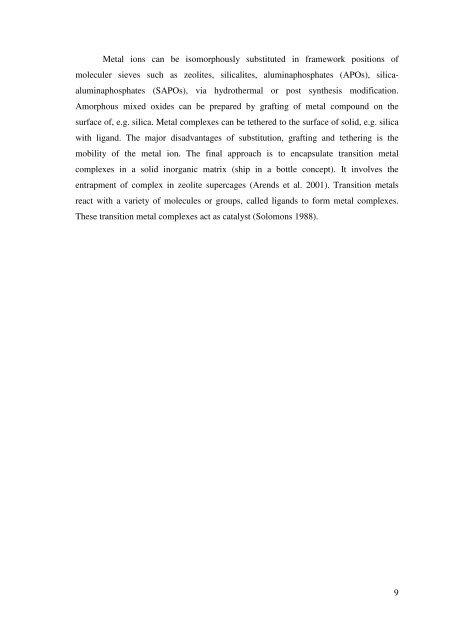the production of thymoquinone from thymol and carvacrol
the production of thymoquinone from thymol and carvacrol
the production of thymoquinone from thymol and carvacrol
You also want an ePaper? Increase the reach of your titles
YUMPU automatically turns print PDFs into web optimized ePapers that Google loves.
Metal ions can be isomorphously substituted in framework positions <strong>of</strong><br />
moleculer sieves such as zeolites, silicalites, aluminaphosphates (APOs), silica-<br />
aluminaphosphates (SAPOs), via hydro<strong>the</strong>rmal or post syn<strong>the</strong>sis modification.<br />
Amorphous mixed oxides can be prepared by grafting <strong>of</strong> metal compound on <strong>the</strong><br />
surface <strong>of</strong>, e.g. silica. Metal complexes can be te<strong>the</strong>red to <strong>the</strong> surface <strong>of</strong> solid, e.g. silica<br />
with lig<strong>and</strong>. The major disadvantages <strong>of</strong> substitution, grafting <strong>and</strong> te<strong>the</strong>ring is <strong>the</strong><br />
mobility <strong>of</strong> <strong>the</strong> metal ion. The final approach is to encapsulate transition metal<br />
complexes in a solid inorganic matrix (ship in a bottle concept). It involves <strong>the</strong><br />
entrapment <strong>of</strong> complex in zeolite supercages (Arends et al. 2001). Transition metals<br />
react with a variety <strong>of</strong> molecules or groups, called lig<strong>and</strong>s to form metal complexes.<br />
These transition metal complexes act as catalyst (Solomons 1988).<br />
9
















